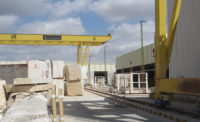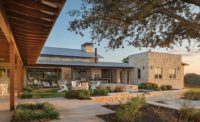The Trivedi family has been active in the working of marble and granite since 1937, respecting the wishes of the founder Tardo Shri Trivedi, a restorer of ancient monuments and traditional Indian temples. Such a vocation and expertise have generated the growth of one of the most important industrial groups in the field, a leader in India in the working of marble for historical buildings, places of worship, state halls and prestigious houses.
The Group’s operation relies on its own marble quarries; and its integrated organization is capable of facing and solving all market requests effectively, even from the most demanding interlocutors, among which are architectural firms and designers, ministries, cultural foundations and superintendents of artistic heritage. This dominant positioning of the Group is also acknowledged in nations such as the U.S., the UK, Saudi Arabia and several other countries in the Middle East, as well as the Asian South East countries.
The current president, Kiran Trivedi, assisted by his sons, who hold strategic managerial positions in the company, has further invested in automated marble working lines, aiming at machining versatility and accuracy as strategic factors for their identity in the market and competitiveness of their offers. This business strategy has led to an increasing collaboration with CMS over the years, whose technologies provide a solid basis for Trivedi’s working potential. Their range of machines has been recently extended with the purchase of four new machining centers: two GIXA CNC 5-axis bridge sawing machine and two G-REX 5/6-interpolated-axis machining centers.
The machining systems for the processing of marble, granite and other types of stone materials, which are operating in the Ahmedabad factories, are at the heart of Trivedi Group’s capabilities. Trivedi’s production currently avails itself of no less than 20 CMS numerically controlled machining centers — a considerable technological range which reveals the strength of the years-long collaboration and mutual esteem between the two companies. All CMS machining centers, installed beginning from 1997, are still fully operational — a clear demonstration of the tangible economic advantage of investing in reliable technologies.
CMS machining centers have always been preferred by Trivedi due to their operating quality, reliability and productive potential; in particular, CMS machining centers are acknowledged as capable of machining “complex design and nish” workpieces faster, where serialized operations need to be overcome by special machining interventions ensured by advanced numerical controls. This means higher machining precision and optimization of related costs.
It is no accident that Trivedi relies on an in-company specialized team of architects and designers, guaranteeing quality, elegance, and above all, perfect compliance with project parameters, in particular as it regards projects overseen by artistic heritage authorities and characterized by historic and monumental value.
Trivedi is also well-equipped for supporting the customer at all stages — from the preliminary check of renewal works involving historic-monumental sites to the drafting of designs concerning product development and engineering programs, up to the manufacturing of works and related installation “in situ.” The production ranges from individual finely cut works to large mass production of statues, columns, capitals and reliefs.
The Trivedi Group specializes in the machining of marble (about 80% of the overall production) and granite parts intended for the traditional Indian architecture, but the expertise and ability of the Trivedi Group as a part of the stone industry have gained worldwide renown and a greater force at the service of major religions and cultures. Trivedi’s reputation has been highly consolidated by the opportunity to machine the valuable and magnificent white marble from Ambaji quarry.
The production systems are planned for the machining of the most varied types of stone with excellent results. The constant monitoring of the various production cycle steps makes it possible to maintain quality control at the highest level. Such know-how explains the recent job order for the construction of the palace of the Emir of Qatar; this building is characterized by exceptional architectural dimensions and technical-constructs, with an enormous number of columns and other marble parts.
The four new CMS machining centers were installed in January 2015 and set to work immediately, in order to meet such an extremely demanding job order with respect to the number and features of the machinable workpieces, delivery times and output accuracy. The CNC machining centers have fulfilled Trivedi Group’s expectations ideally, in particular by creating a noteworthy synergy between the repetitive cutting operations carried out by the GIXA 5-axis CNC bridge sawing machine and the detailed and specific interventions of the tools mounted on the automatic tool changing electrospindle of the G-REX machining center.
This case study was submitted by CMS.











